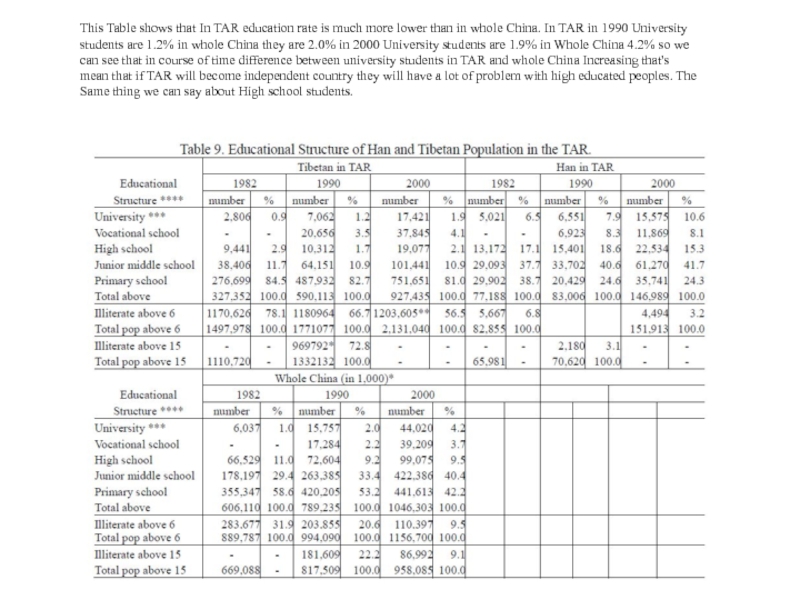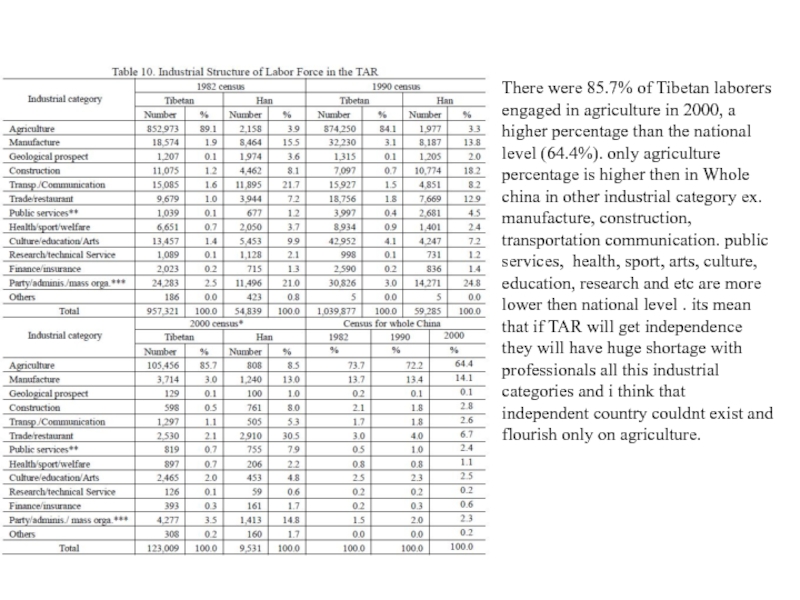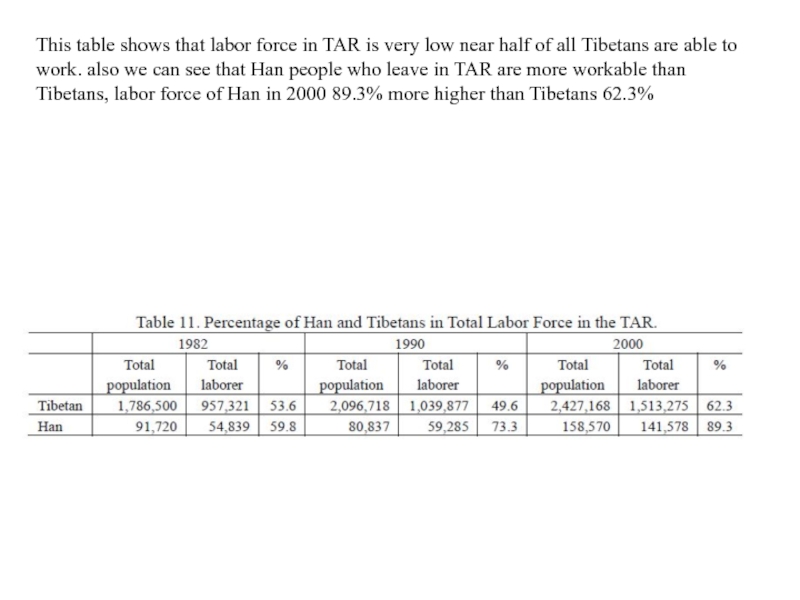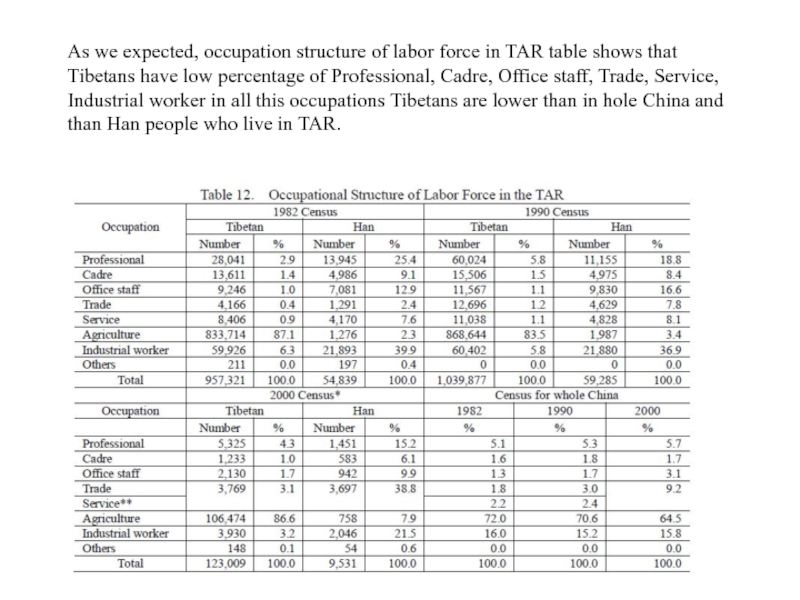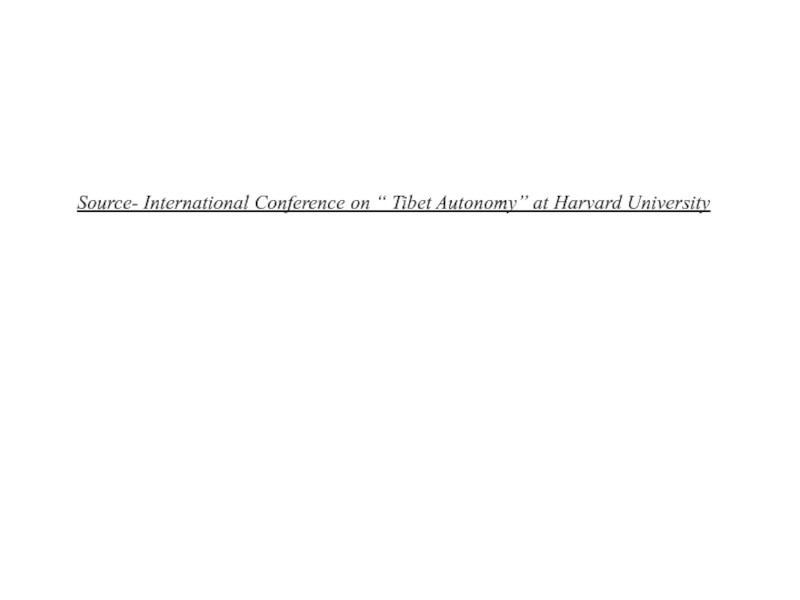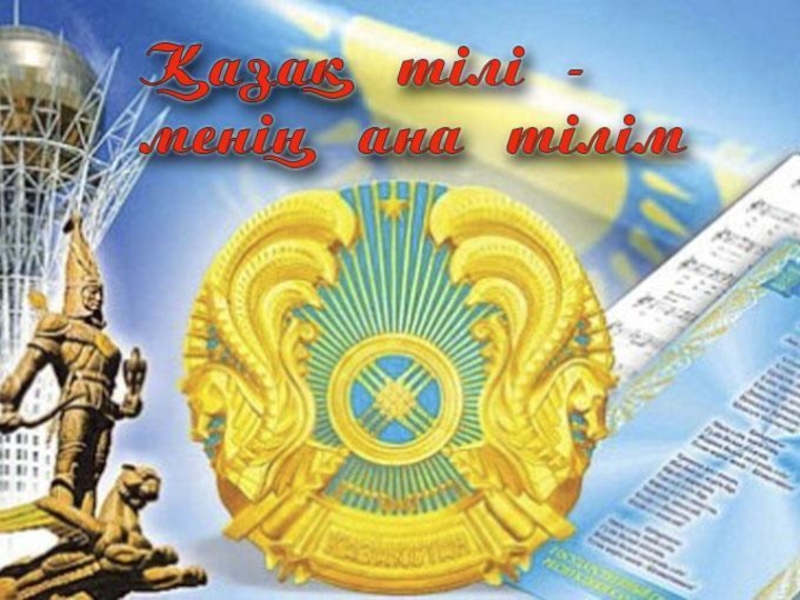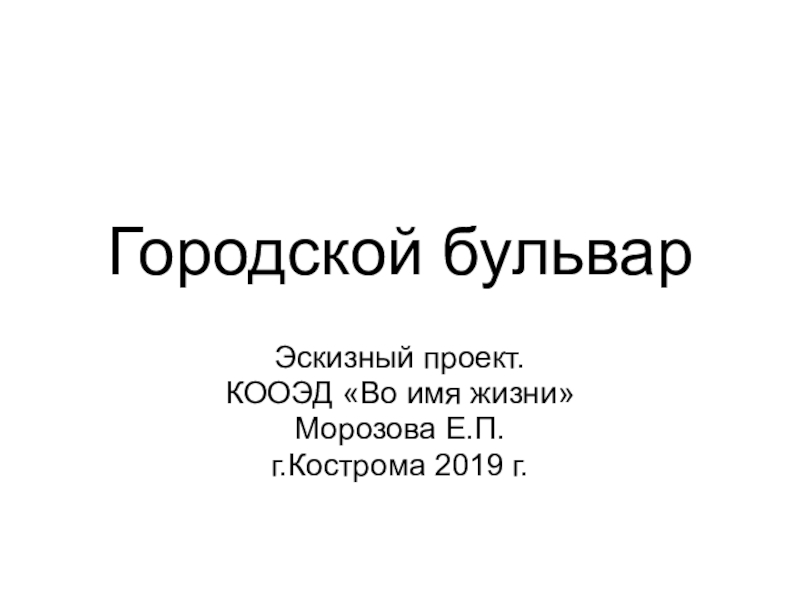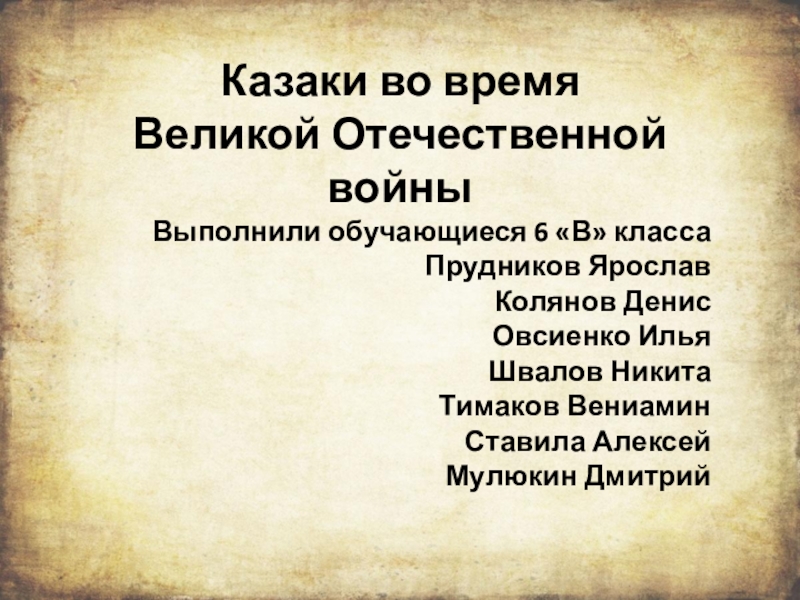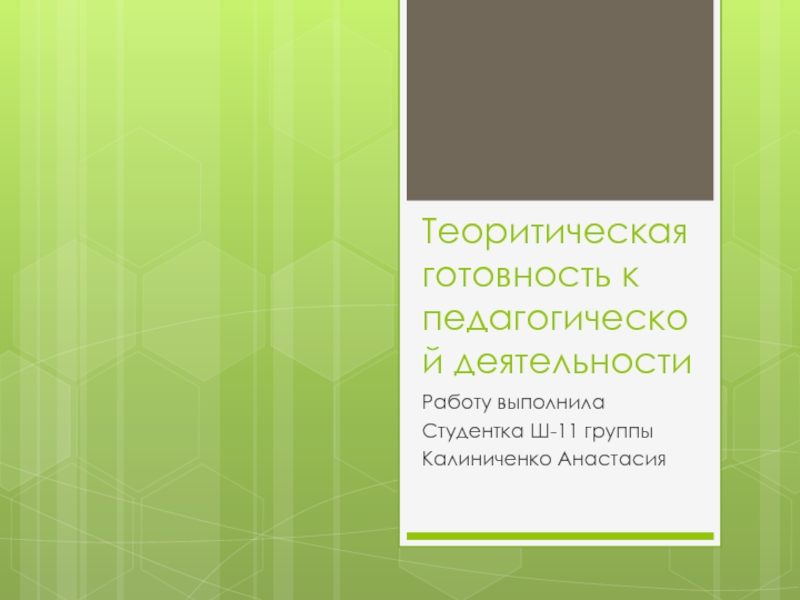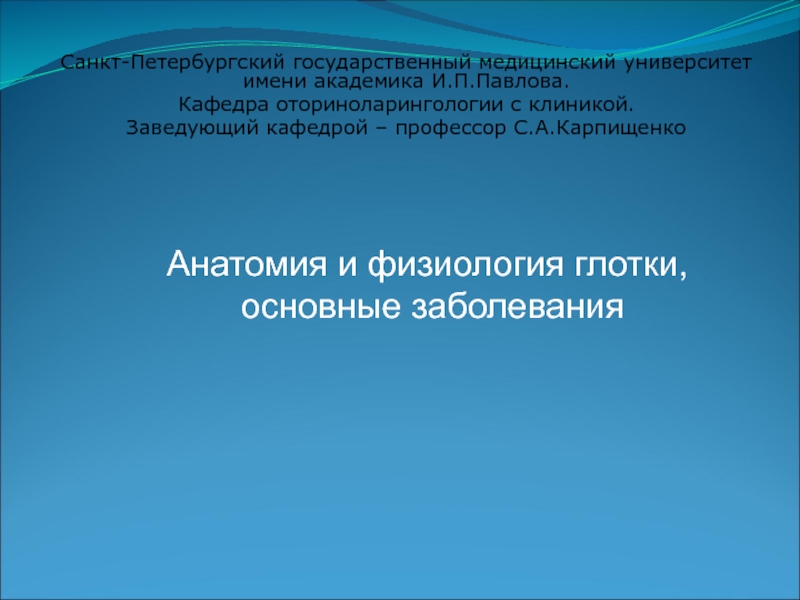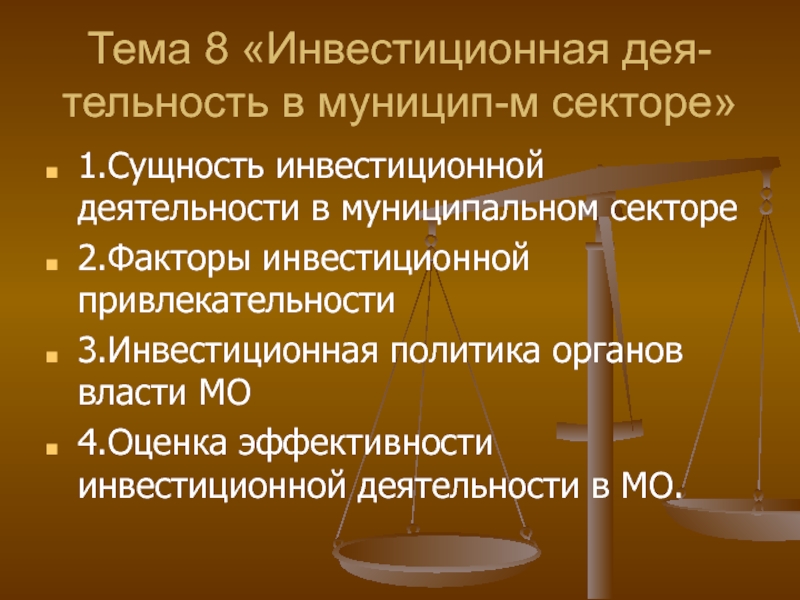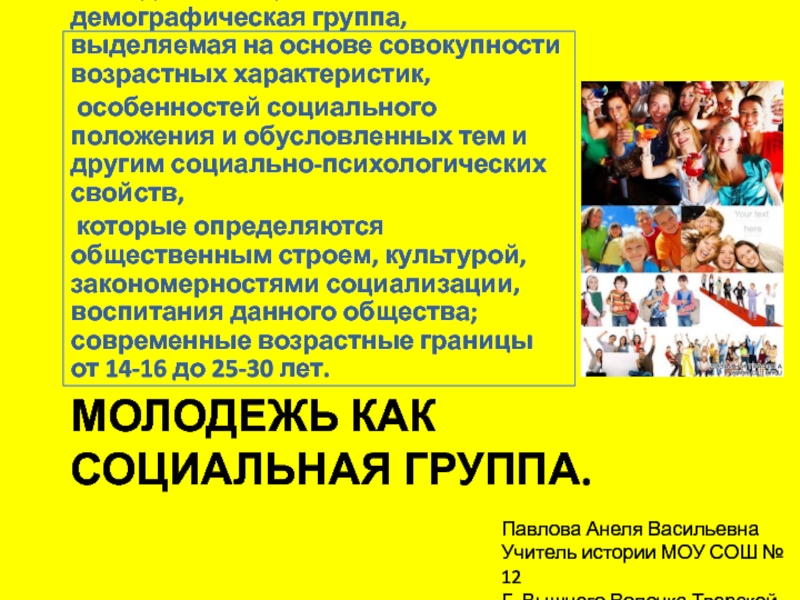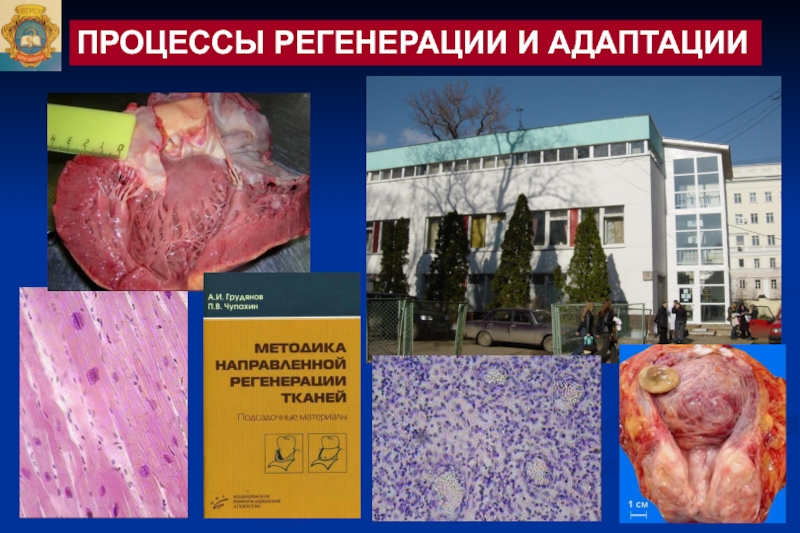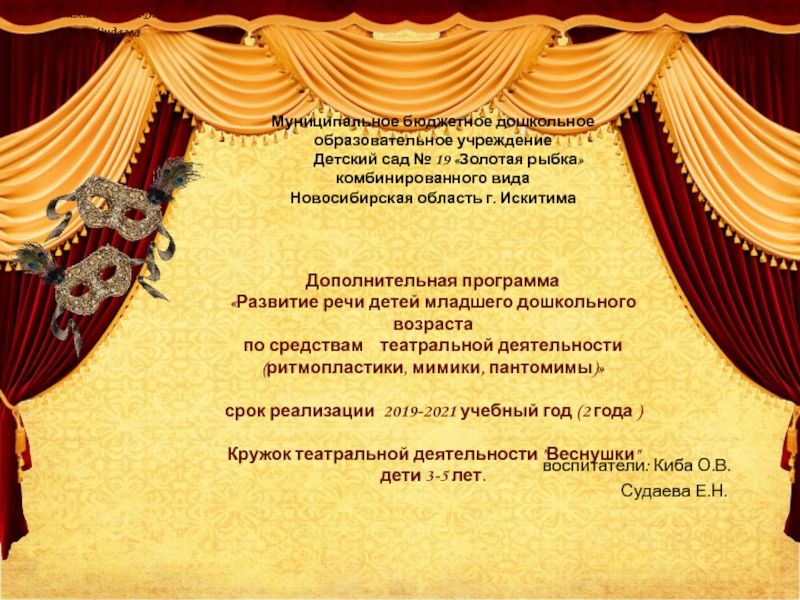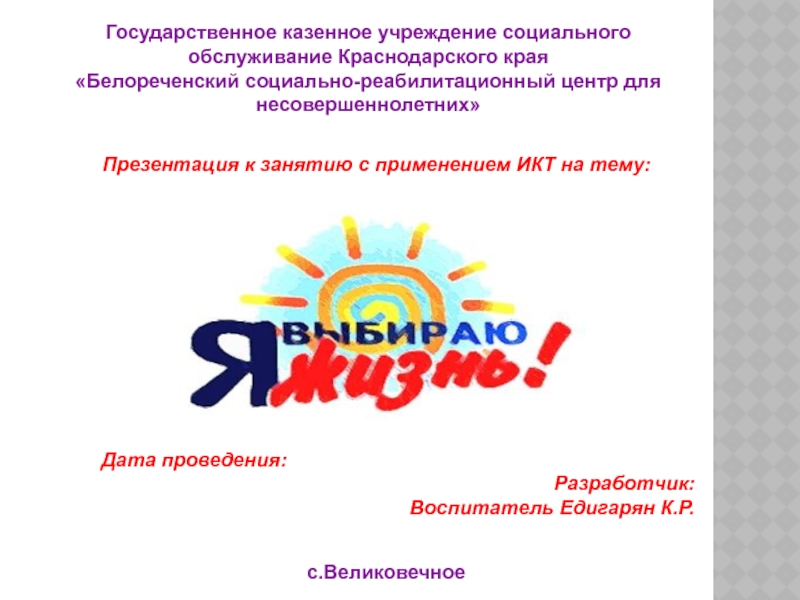Разделы презентаций
- Разное
- Английский язык
- Астрономия
- Алгебра
- Биология
- География
- Геометрия
- Детские презентации
- Информатика
- История
- Литература
- Математика
- Медицина
- Менеджмент
- Музыка
- МХК
- Немецкий язык
- ОБЖ
- Обществознание
- Окружающий мир
- Педагогика
- Русский язык
- Технология
- Физика
- Философия
- Химия
- Шаблоны, картинки для презентаций
- Экология
- Экономика
- Юриспруденция
This Table shows that In TAR education rate is much more lower than in whole
Содержание
- 1. This Table shows that In TAR education rate is much more lower than in whole
- 2. There were 85.7% of Tibetan laborers engaged
- 3. This table shows that labor force in
- 4. As we expected, occupation structure of labor
- 5. Source- International Conference on “ Tibet Autonomy” at Harvard University
- 6. Скачать презентанцию
There were 85.7% of Tibetan laborers engaged in agriculture in 2000, a higher percentage than the national level (64.4%). only agriculture percentage is higher then in Whole china in other industrial
